Industrial Revolution
What was the impact of the Industrial Revolution in Kirklees
Before the Industrial Revolution
In 1599, William Ramsden bought the manor now known as Huddersfield, when it was mainly an agricultural economy. However, due to the hilly landscape, the people struggled to produce enough food for the growing population. Therefore, the plentiful supply of wool helped to supplement local peoples' income. For centuries, this industry was based in people's homes: weaver's cottages were a common sight in the valleys of Kirklees. This provided work for the whole family, and small windows, characteristic of weavers cottages, provided light for families to work as long as possible in daylight.
The impact of industrialisation on Huddersfield
From around 1750, mills and factories began to appear in previously rural landscapes. Towns such as Manchester and Sheffield saw rapid growth in population as people moved from the countryside to work in the cities. This impacted on other local towns, who had access to large cities via canals and railways, and by the 19th century Huddersfield was transformed into a textile powerhouse. The canals also provided raw materials to support the wider industry, where chemical factories also developed.
The Victorian period
Queen Victoria ascended to the throne in 1837, at the height of the Industrial Revolution. Her reign is celebrated as one of innovation, with developments in medicine, science, industry and education. Britain celebrated its connections to the wider world through its Empire, and daily life transformed through increased leisure time, new sports, holidays to the seaside and education for all.
A society divided
The Industrial Revolution brought great wealth to many individuals who invested in new industrial businesses, such as the owner of Ravensknowle Hall (now Tolson Museum), John Beaumont. The vast majority of people however experienced extreme poverty, with a lack of resources, housing and clean water. The gap between the richest and poorest grew during this time. This led to a lot of unrest, and Huddersfield was at the centre of demands for political reform through individuals, such as Richard Oastler, and groups such as the Luddites.
What to expect in the box
The items in bold are original items, please take extra care with these.
Huddersfield's wool history began in the early 1700s when locals discovered that the soft water from the Colne and Holme Rivers was ideal for washing raw wool. The town's location next to rivers, and the surrounding hills which were good for grazing sheep, made it a natural center for the textile industry. People prepared textiles in their homes, which became known as weaver's cottages.
In 1766, the trade moved from domestic spinning and weaving to large-scale mill production in the Cloth Hall, which was designed by Sir John Ramsden.
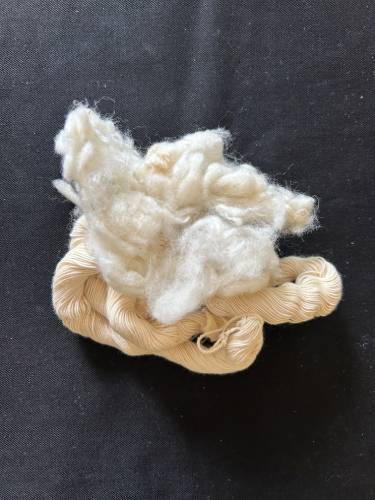
Please note, this is original and authentic
The first Christmas cards were printed in 1843. Before then, sending a letter had been costly.
With the improvement on the mail service, and more cards being printed commercially, people began sending cards for Christmas, Valentines Day and birthdays.
When photography became cheaper for all members of society in the 1850s, people would often take and send photographs to mark occasions.
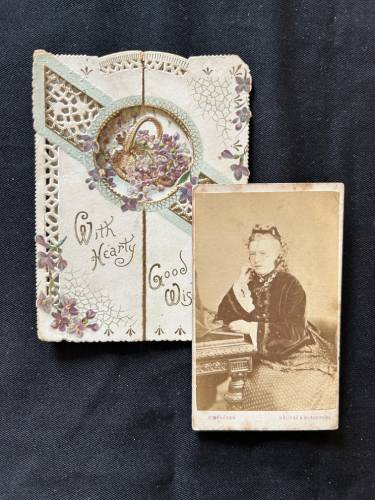
Please note, this is original and authentic
When spectacles were first invented in the 14th century they were viewed negatively.
However, by the Industrial Revolution they were recommended by doctors and used to improve eyesight.
Reading for leisure and education was also on the rise the 19th century, which required better vision amongst the general population.
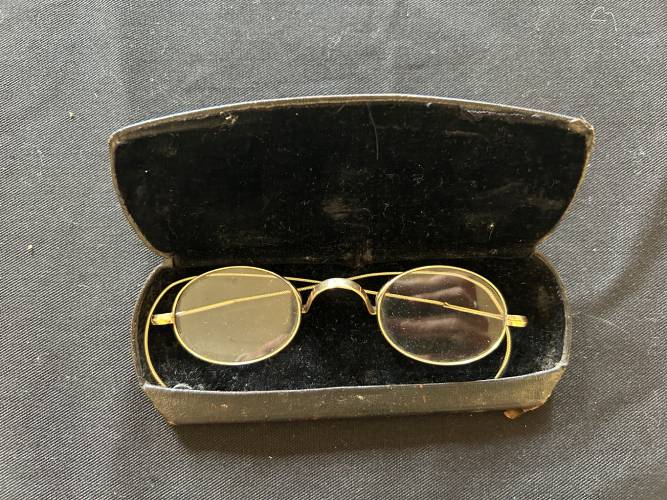
Punishment in Victorian schools was often harsh. Finger stocks like these would be used to tie a students fingers behind their backs if they were caught fidgeting.
Students could also be caned or forced to wear the dunce cap for answering questions incorrectly.
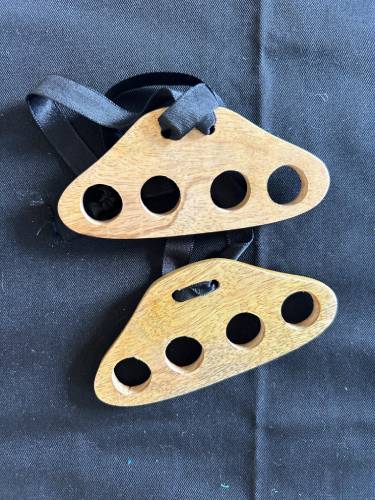
Please note, this is original and authentic
Religion was very important to people in the Victorian period. A christening would be a celebrated occasion, and children would be christened in all white at the local church.
White embroidery in white cotton was very fashionable.
Large families were common in the Victorian era and a mother might embroider a very fine christening outfit while awaiting her first born, which would then be used for all the children of the family.
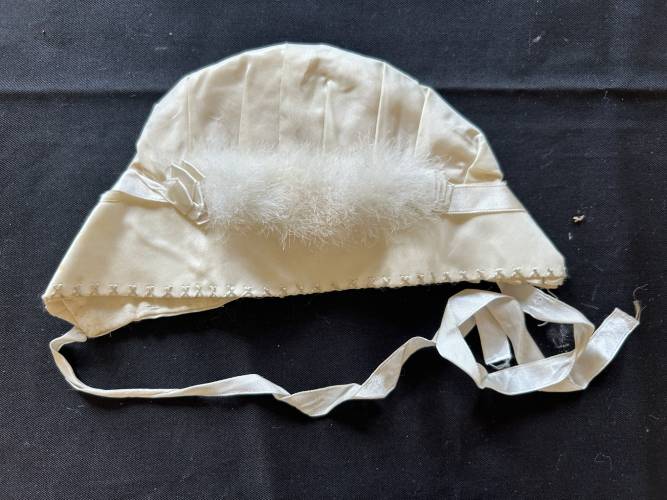
These cards would be used in a Jacquard, which was a device fitted to a loom machine.
It allows for complex designs to be woven with a range of different colours.
The loom was controlled by a chain of cards like these where the holes punched into the cards represented one row of the design.
This invention revolutionized the textile industry, and is seen as the first form of coding.
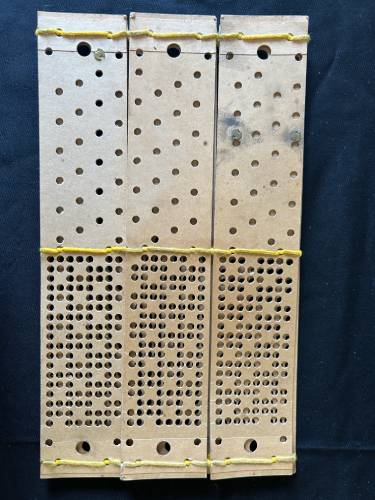
A bobbin was used in the textile industry to collect and release thread. It revolved around a metal spindle and mills would often have thousands of them serving a range of purposes.
Many mills also had their own machine shops to manufacture bobbins that were specific to them.
Bobbins were typically made from wood and winding these bobbins full of thread for the weavers to use was typically the work of children.

Please note, this is original and authentic
Clogs were common in the Industrial Revolution as workers needed strong, cheap shoes.
These were usually worn by mill workers between the 1840 and 1950s.
Individual clogs makers were often found in towns and villages with larger companies operating out of cities.
Clogs had wooden soles and leather tops which could keep the feet insulated from the cold floors.
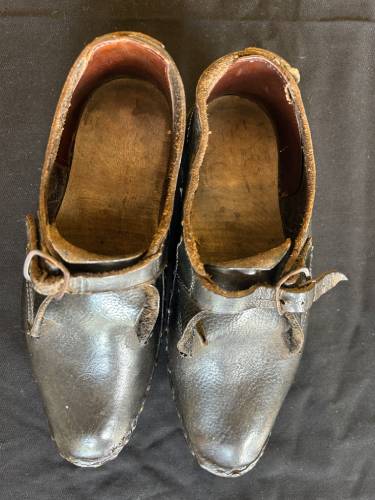
Please note, this is original and authentic
In the Victorian era, gloves were a popular fashion statement used to show a woman's social class.
Whilst gloves were considered mandatory to wear in public, only elbow-length gloves, like these, would be worn in the evening.
Wooden glove-stretchers were used to stretch the fingers of soft leather gloves, ensuring you didn't damage them as you put them on.
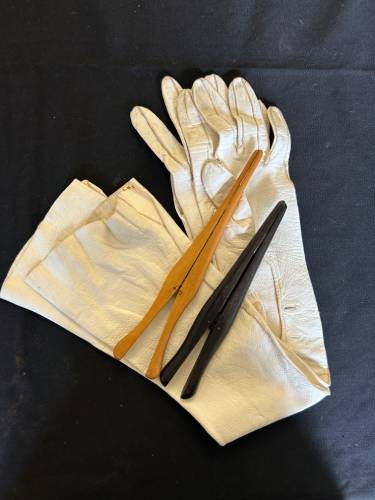
Please note, this is original and authentic
The money system used in Victorian England had existed for several hundred years.
The United Kingdom used a triple system with all prices in pounds, shillings and pence (abbreviated as £, s and d). The basis of this triple system was 12 pennies to the shilling, and 20 shillings to the pound.
There were also farthings (worth quarter of a penny), tuppence (worth two pennies), and many other types of coin.

Please note, this is original and authentic
Victorian irons, also known as flat irons or smoothing irons, were the most common type of iron used in Victorian homes for ironing clothes and bedding.
They were made of solid metal, with a flat, polished side and a handle on the other. The irons were heated on a stove or fire grill, and had to be handled with care to avoid burns.
It was also important to manage the temperature to prevent burn marks on clothing.
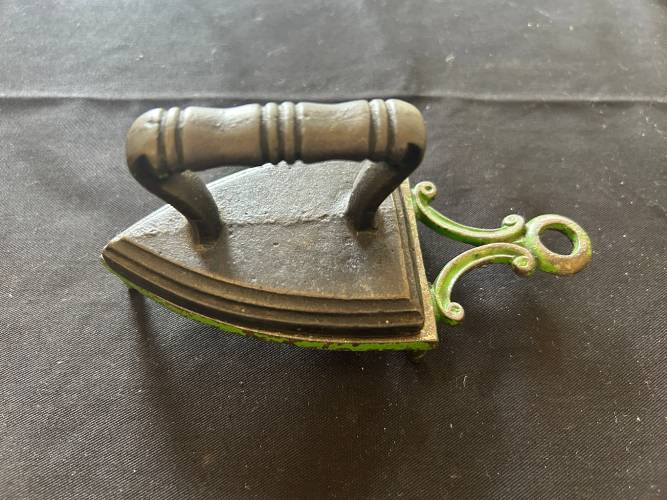
Please note, this is original and authentic
Hot water bottles became popular during the Victorian era (1837 - 1901) and were often used to warm beds and keep warm during cold journeys.
Earlier versions had been made from earthenware (ceramic), until technology was improved and it was possible to use brass and tin.
They would be wrapped in cloth to prevent burns.
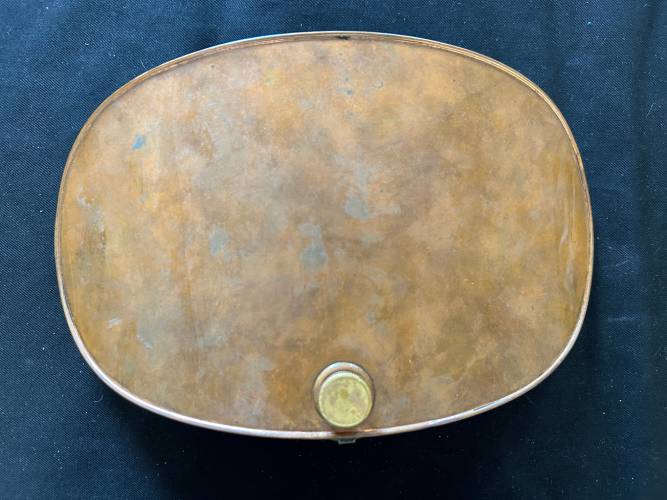
Please note, this is original and authentic
These cards would be used by mill workers to keep a record of the hours they worked so they could be paid properly.
The card would be inserted into a clocking in machine at the beginning and end of the day.
This would print the date and time on the card. Some people can still remember their clocking in and out number.
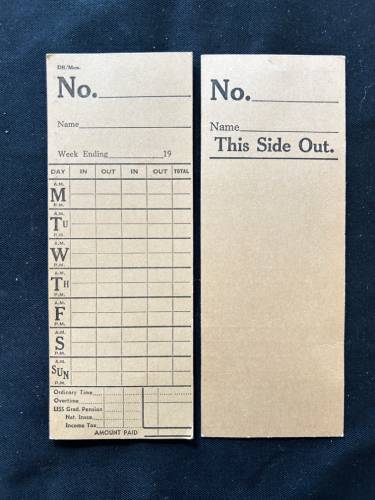
Please note, this is original and authentic
Shuttles were used to hold the thread in a loom as it was used to make cloth. Originally these shuttles would be passed back and forth by hand.
Later, the flying shuttle was invented in 1733 allowing for wider cloth to be woven in a shorter time.
Weavers used to 'kiss the shuttle' which meant using their mouths to pull the thread through the eye of the shuttle, which could spread disease.
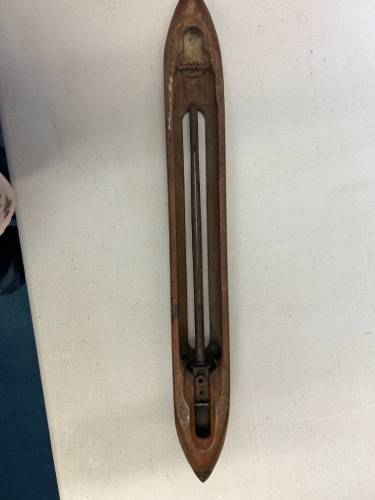
Please note, this is original and authentic
Victorian curling and crimping tongs were made of two hinged iron pieces with narrow cylindrical blades at the end.
They were warmed in a metal compartment that was heated on a stove or spirit burner, and then used to curl sections of hair.
The high temperatures could scorch hair, blister fingers, and burn the skin on the face and ears.
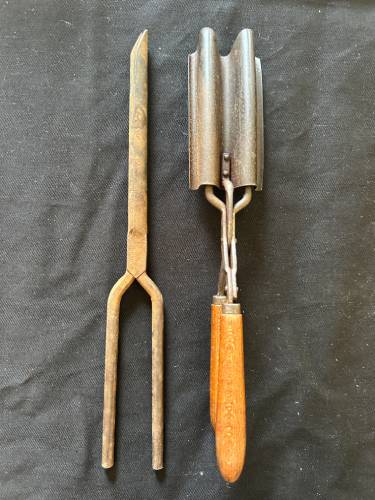
This painting was commissioned by the Ramsden family, who had controlled Huddersfield since purchasing it in 1599.
The artist's viewpoint is close to Longley Hall, the Ramsden family home. It shows the smoking chimneys and flourishing mills of Huddersfield at the peak of its industrial power and prosperity.
William Cohen also did similar paintings of Bradford and Rotherham.
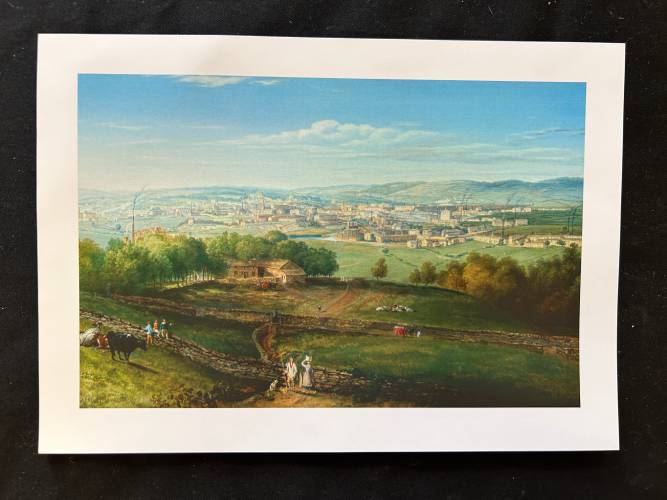
The Industrial Revolution brought a rapid increase in the use of child labour.
Children as young as four were employed in factories and mines, working long hours in dangerous conditions for low pay.
They were often viewed as obedient workers, and were ideal employees because they could be paid less, were smaller and could fit into tight spaces - and they were less likely to strike.
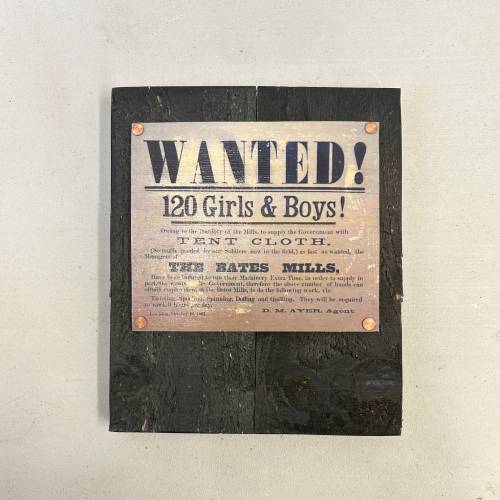
Explore the following themes using the objects
- Textiles
- Health
- Childhood
- Industry
- Rich and poor
- Landscape
- Innovation
- Technology




